Seductive Simplicity
This performance cruising catamaran takes aim at monohull sailors with its simple elegance and sprightly performance
The Excess 14 is the culmination of five years of design, testing and planning. Groupe Beneteau launched the Excess brand in 2018 with two repurposed designs, the 40-foot 12 and the 48-foot 15. But it was back to the drawing board for the 39-foot Excess 11 launched in 2020, with a sporty cabinhouse and increased sail area.
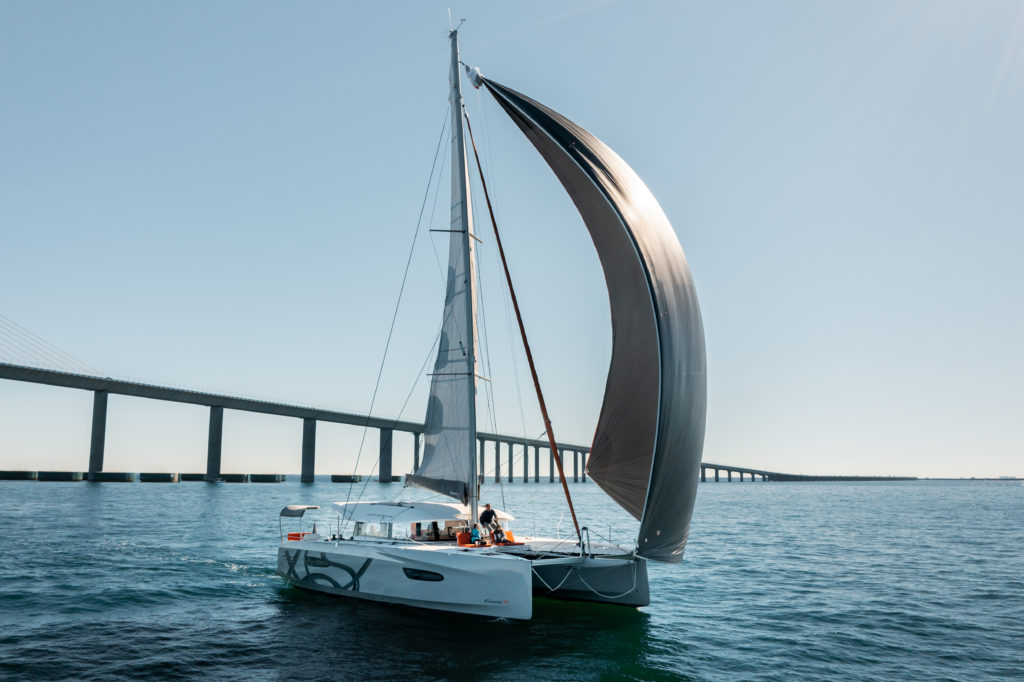
The test boat included the Pulse package, which is the preferred model for private ownership with the base boat going mostly to the charter market. The Pulse line has a taller mast with 130 square feet more upwind sail area, a longer sprit for a larger code 0, carbon fiber steering wheels and the spiffy orange and gray color scheme.
Interior
The company’s theme of less is more comes into play in the interior, where there is less furniture and storage and an efficient galley.
There are three refrigerator drawers, two of which can be called into service as freezers, on the port side of the main cabin. The small U-shaped galley on the port side features two deep sinks and a three-burner stovetop with plenty of counter space on both sides. The oven is located on the end of the U. The overhead cupboards are a bit high, a compromise to keep sight lines open. There is extra storage below the floorboards. The dinette seats eight comfortably, with the nav desk sharing the end seat.
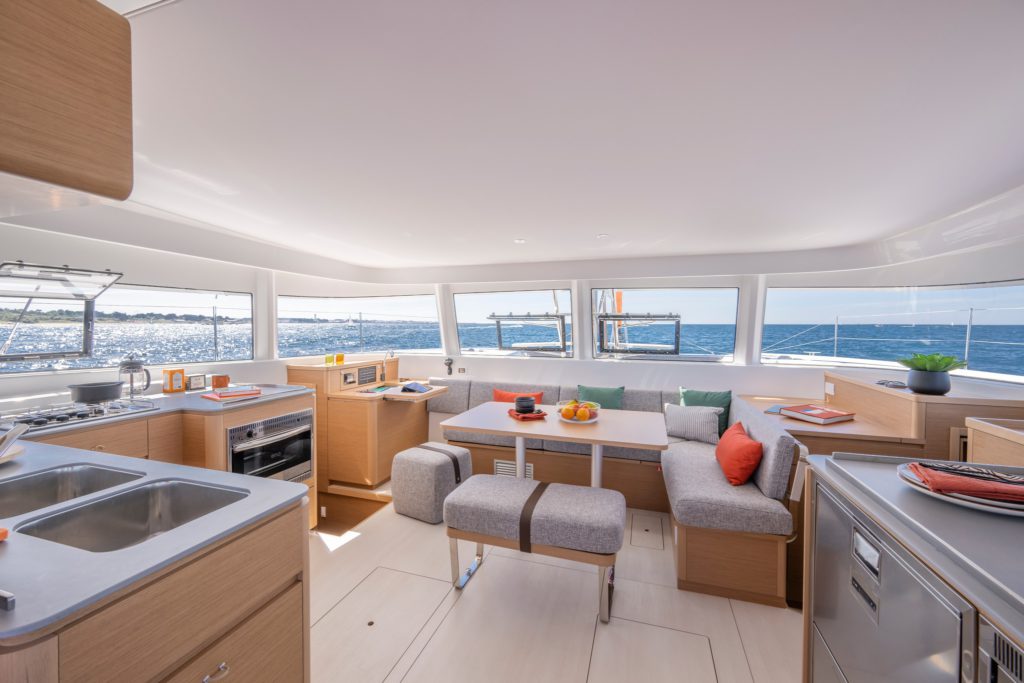
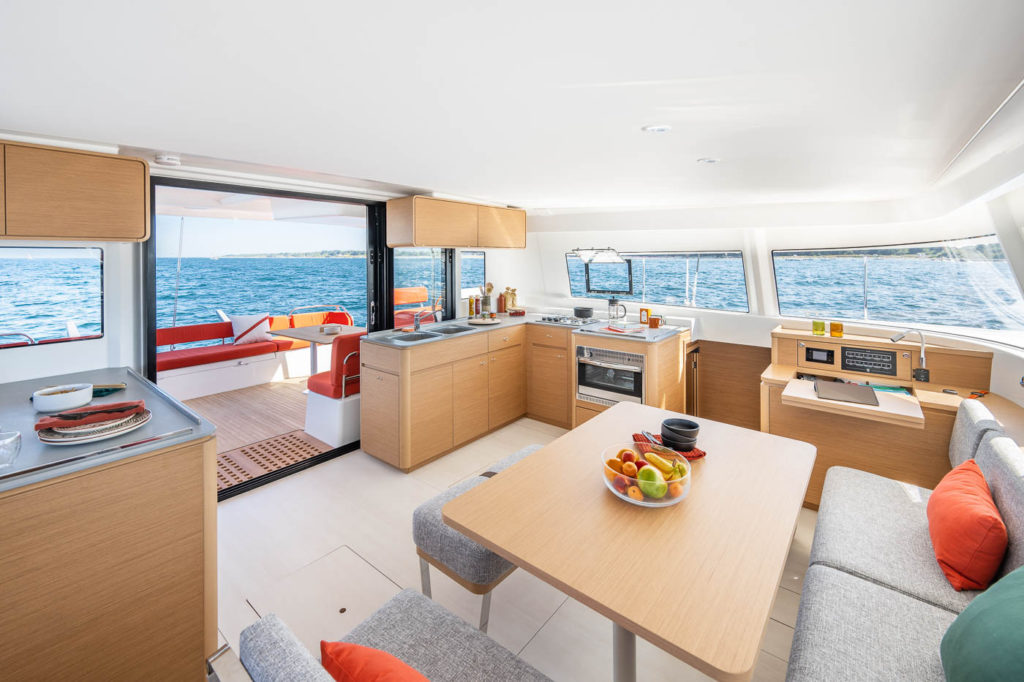
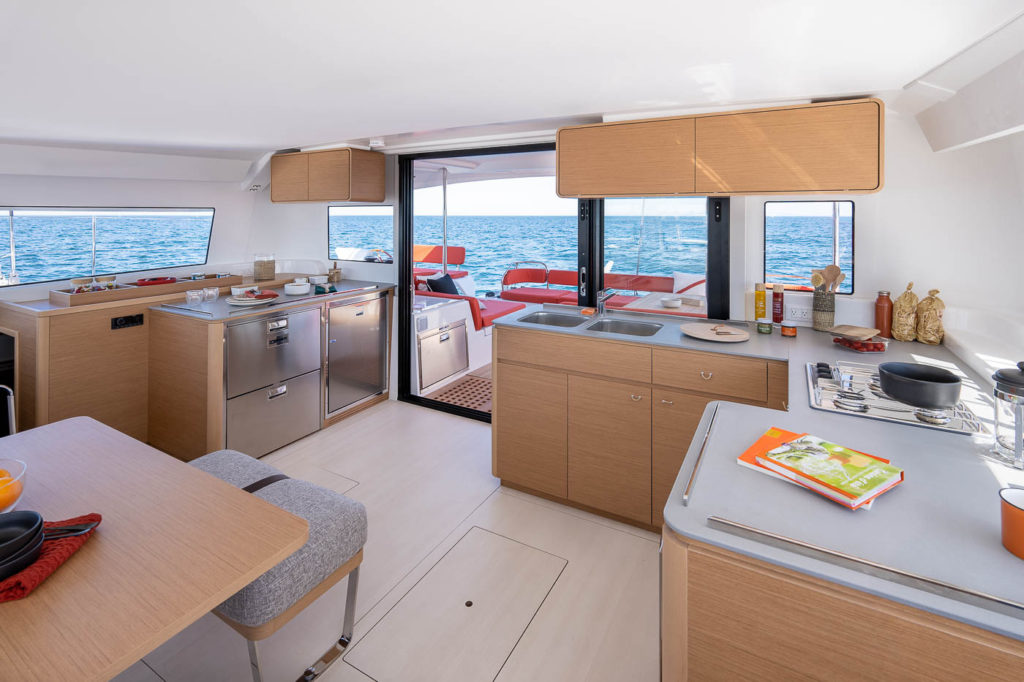

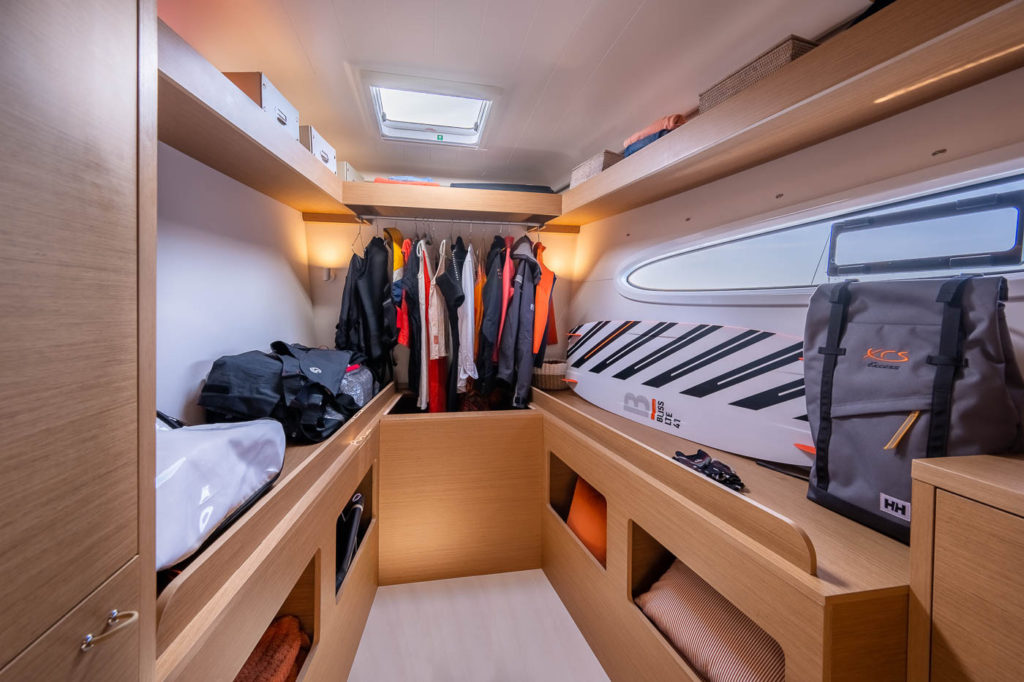
Light and bright are often used descriptors when reviewing boat interiors. The main cabin of the 14 is off the chart in that department with near 360-degree views. Two large opening ports in the forward windows ensure plenty of air flow.
The simplicity extends to the accommodations. The port hull is the owner’s suite, with a large double berth and sitting area aft, and the head forward. In the bow, extra flex space can be used for storage or be a fourth cabin with single berths. Two cabins in the starboard hull each have a head with a separate shower stall and locker space.
On deck
The extra wide side decks were easy to navigate, and handrails on the coachroof would provide a bit of safety in a seaway. The keep-it-simple philosophy was evident on deck.
Two short steps at the base of the mast reach the top of the cabinhouse, where there is an optional lounging area to be used when not underway. The boom sweeps low across the hard top, making it easy to reach the mainsail with no need to perform acrobatic maneuvers to zip the lazy bag.
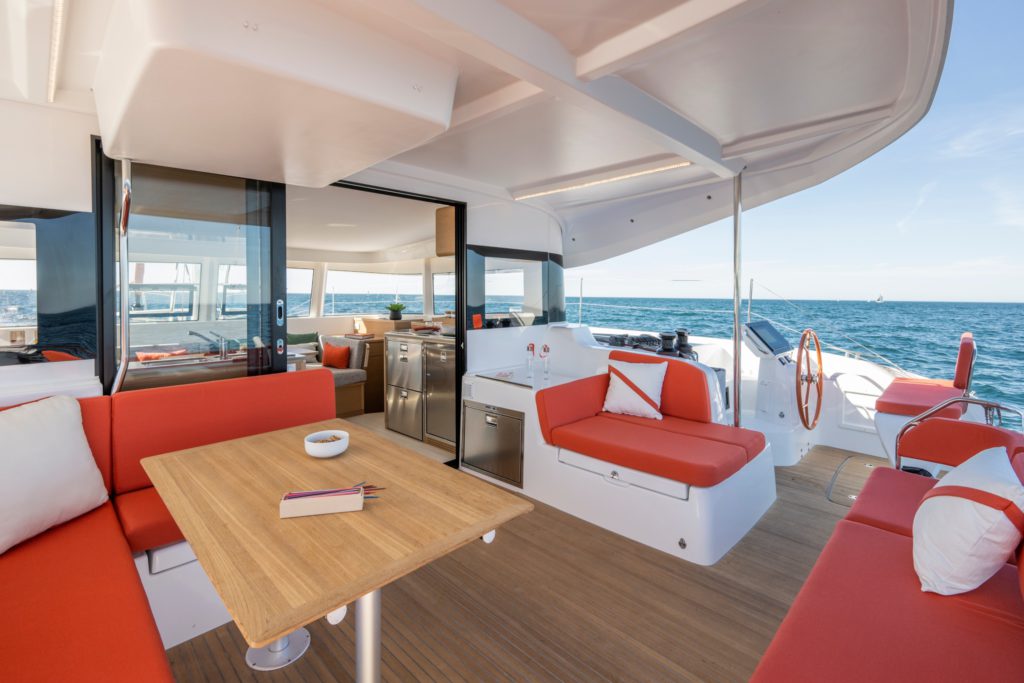
The heart of the boat is the large cockpit tucked beneath the hard top. There’s an L-shaped settee and table to port and small settee and drawer refrigerator to starboard. A long settee stretches between the helm stations on the aft rail. The helm seats hinge up to provide access to the transom.
Under sail
Getting under way was a simple process, with all control lines led to a bank of clutches and a pair of electric Harken two-speed winches at the starboard helm. The full-batten, flat-top main went up lickety split, and with a quick unfurl of the headsail, we headed into the bay.
The bright orange Carbonautica wheels were comfortable, and the helm was responsive, tacking easily, with the deep twin rudders shouldering the bulk of the work. With the helm position pushed all the way aft, the wheels are above the rudders, allowing for a direct connection using Dyneema cables. The boat was very responsive, and in true multihull style, the apparent wind quickly built and went forward. After the tacks, I popped over to the leeward helm station to get a better view of the mainsail, a natural helmsman spot for a monohull sailor…
